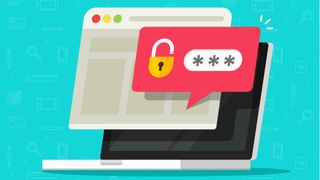
Contrary to popular belief, the issue isn’t actually about hackers brute drive assaults to crack passwords, though this does occur. The real issue is the quantity and frequency of data breaches the place consumer credentials are leaked after which made accessible for sale on the darkish net. In truth, in line with Verizon’s newest breach report, 80% of hacks right now aren’t actually hacks however dangerous actors merely logging in with valid user credentials they’ve obtained elsewhere.
It doesn’t matter how well we save the pipes with sturdy encryption or how efficient a Safety Operations Centre (SOC) is, if somebody can simply acquire credentials and log-in ‘legitimately’ our greatest efforts have gone to waste. Passwords are also the basis reason for horrible and traumatic consumer expertise, which could go some approach to explaining why younger generations seem to have given up on making use of them properly.
Password habits are getting worse, not better
You may think that digital natives, these youthful generations born right into a related world, are extra capable of defend themselves on-line. Sadly, new analysis we commissioned confirms that youthful generations have significantly riskier password habits than their mother and father, with 24% of these aged between 24 and 38 (Millennials) utilizing the same password for all their accounts, in comparison with just 2% of baby boomers.
With 14% of youthful generations reporting they’ve by no means modified their password it’s simple to see how the dangerous guys can use credentials stolen from one place to log-in someplace else. Maybe worse nonetheless it’s now frequent for young individuals (62%) to voluntarily share credentials for providers like Netflix with friends and family, maybe sending them using unencrypted electronic mail or messaging accounts.
The purpose of this research isn’t to bash the young but quite to spotlight that the best way we ask individuals to authenticate right now is too cumbersome for customers and is in fact the basis reason for the booming id theft business. It’s telling that analysts from Gartner stated in a latest report “Knowledge breaches of personally identifiable information (PII) are rendering checking of static id data (usernames and passwords) obsolete”.
2FA to the rescue?
The logical response over the last few years has been to layer additional ‘factors’ on prime of the password. By asking individuals to validate their id based mostly on ‘something they’ve’, by getting into a one-time passcode sent to their mobile phone or electronic mail, we can make life a lot tougher for hackers.
Two-factor authentication or ‘2FA’ has grown in popularity and is now an integral facet of the Robust Buyer Authentication necessities for e-Commerce funds. The majority of massive companies additionally ask workers to make use of 2FA when logging in.
Sadly this makes a poor experience even worse because it actually doesn’t make sense for somebody’s id to be tied to their machine. What happens for those who’re attempting to log in to a piece software to make a deadline when you’re out on the highway and your phone runs out of battery? Otherwise you use an authenticator app and then you definitely lose your phone? Maybe this is why solely 25% of respondents to our survey stated they recurrently allow 2FA when it’s a possibility.
There are also query marks about how for much longer 2FA will hamper the dangerous guys with a variety of latest phishing assaults evolving to trick users into voluntarily disabling their 2FA safety. The issues with id require root and branch reform, 2FA is a nice strive but we need to be far more ambitious.
Is Multi-Factor biometrics the answer?
A multi-factor authentication approach based on biometrics has the potential to ship a step-change in safety and the consumer’s expertise. In a world the place workers are logging on throughout public networks, from anyplace, we are able to no longer supply them a ‘perimeter’. Instead we should spend money on trendy authentication that helps users to securely and easily entry providers every time and wherever they need.
Somewhat than asking users to remember a password we store their biometric identifiers, a voice and face print, so we are able to authenticate against these throughout any device they’re logging in from. We mix the biometric examine with additional ‘silent’ factors that improve safety nonetheless additional. So from a consumer’s perspective, all they need to do is current their face and they’re in.
With underlying protocols like OpenID Join, web site, application or cloud service providers can simply permit an id supplier so as to add biometric authentication on prime of their methods. For the consumer this makes their biometric id broadly interoperable and behind the scenes it works in precisely the identical means as logging-in with Facebook or Google.
With a well-engineered biometric authentication service we are able to additionally decouple somebody’s identity from their machine. We regularly describe this as ‘the Netflix effect’, as a result of the biometric checking occurs within the cloud quite than regionally on a tool a consumer can transfer between their laptop, phone or a third-party device and still log-on using their face.
People have understood biometrics hold the reply to safer authentication for a variety of years nevertheless it’s been laborious for all however the largest companies to deploy the technology. However the economics and complexity are improving and we believe we’re an ideal instance.
If we’re severe about tackling id theft and data breaches then we should transition away from usernames and passwords because they’re the reason that folks must store their personally identifiable information with a number of organizations. It’s that personal information that’s misplaced and which is then used to perpetrate more hacks.